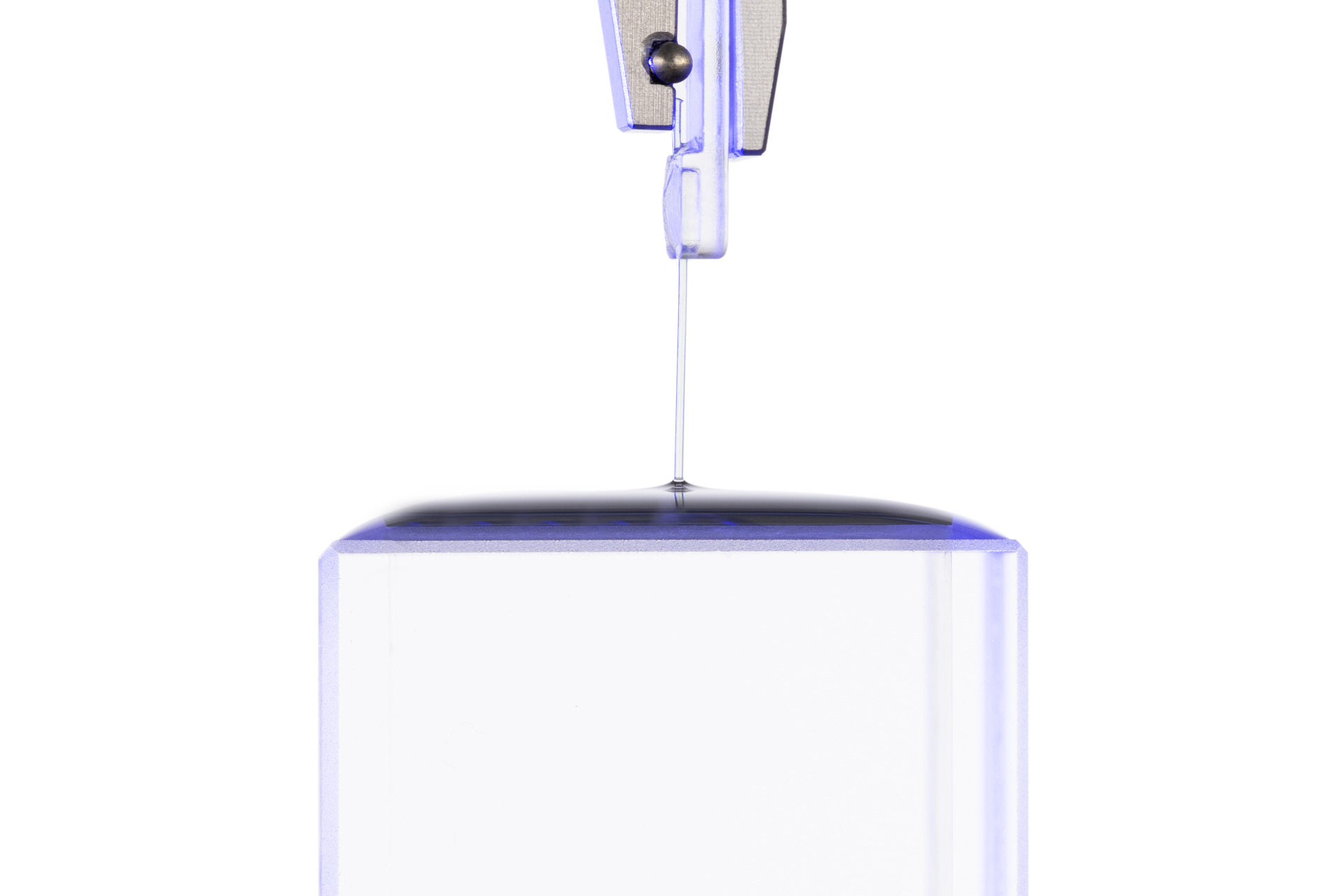Meniscus method
The Meniscus method is an optical method for measuring fiber wettability based on the contact angle of the meniscus, which occurs due to capillary force on a vertically immersed fiber.
For which questions is the fiber contact angle relevant?
Many processes and products involve contact between fibers and liquids. Often, wettability plays a major role. For example, in the development of hair care products, it is important to know whether and how the behavior toward water changes after hair washing. In composites, the fiber must be compatible with the polymer matrix, which can be recognized by its wettability. The contact angle is also important for the manufacture and care of textiles.
How does the Meniscus method work?
In the Meniscus method, a sample attached to a fiber holder is immersed vertically in the liquid. The meniscus formed on the fiber forms a characteristic contact angle at the three-phase point that depends on the wettability. The immersion process is recorded by a camera and the video image is analyzed to determine the contact angle based on a contour analysis.


The fiber holder designed by KRÜSS is compatible with any needle dosing system for instruments of the Drop Shape Analyzer type, which can be used without conversion thanks to direct attachment to the needle. If the dosing unit is height-adjustable via the software, the contact angle can also be measured dynamically during immersion and withdrawal of the fiber – to determine the advancing angle and the receding angle.
The fiber contact angle can also be determined with a tensiometer. Why a new method?
In fact, measurement based on the wetting force with the Wilhelmy method of a tensiometer is the standard procedure for fiber contact angles. The Meniscus method will certainly not replace the Wilhelmy contact angle, but it is a good addition for users of optical contact angle instruments, who can use it to expand their range of samples – without conversion and with little investment. Users also benefit from methodological advantages: Unlike the Wilhelmy method, neither the fiber diameter nor the surface tension of the liquid need to be known, since the contact angle is directly detected optically. This reduces the preparation effort and eliminates two input parameters that are subject to measurement errors.
When should the fiber contact angle be measured with the tensiometer in any case?
The Meniscus method is hardly suitable for samples with low wettability, such as water-repellent textiles, whose contact angle is above 90°. In this case, there is no capillary adhesion but capillary depression, i.e. the meniscus reverses and the three-phase point is below the surface level. In this situation, optical measurement is difficult to accomplish. The other extreme, namely a particularly small contact angle, is also a hurdle, because then the three-phase point cannot be detected well by image analysis. For the Wilhelmy method on a tensiometer, neither very good nor extremely low wettability pose a problem.


